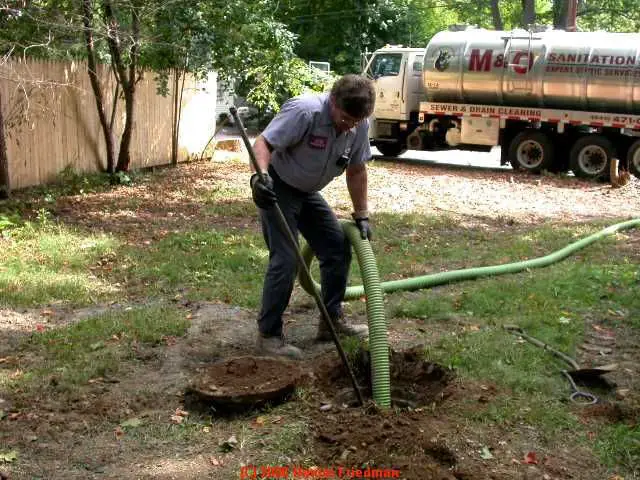Page Contents
Quick Answer
Pumping frequency for a 1000 gallon holding tank depends on usage, but a good rule of thumb is every 3-4 weeks for a household. With normal usage, solids will accumulate at the bottom of the tank over time and need to be removed to maintain proper function.
What is a Holding Tank?
A holding tank, also known as a septic tank, is an underground receptacle for sewage collection from houses that are not connected to a sewer system. Waste water from the home flows into the tank where solids settle out on the bottom forming sludge while oils and grease float to the top as scum. The liquid effluent in the middle layer flows out of the tank into the drain/leach field.
Bacteria break down the organic solids in the sludge at the bottom. However, not everything breaks down completely. Over time, these solids will accumulate in the tank and need to be pumped out to maintain adequate capacity and prevent clogs and backups.
Types of Holding Tanks
There are a few types of holding tanks:
- Concrete tanks – These are poured and cured on site for a custom fit. They are durable but higher cost.
- Polyethylene tanks – Manufactured from plastic polymers, these are lower cost but still durable. Many designs are available.
- Fiberglass tanks – Created with fiberglass reinforcement, these combine durability and lower cost but may be prone to cracking.
- Steel tanks – Durable but prone to corrosion, these have largely been phased out by plastic and fiberglass designs.
1000 gallons is a common size for residential holding tanks, but sizes range from 500 gallons to 1500+ gallons. The size should be matched to the household occupancy and usage rates.
How Often to Pump
For a 1000 gallon tank, pumping frequency depends primarily on:
- Number of occupants
- Water usage
- Tank size
- Volume of solids entering the tank
As a general guideline with normal usage:
- 1000 gallon tank size
- 3-4 bedroom home
- 3-5 occupants
The tank should be pumped every 3-4 weeks.
With higher usage or more occupants, pumping as often as every 2 weeks may be needed. For very low usage households, pumping every 6-8 weeks may be sufficient.
Monitoring sludge and scum buildup levels through the inspection pipe is the most accurate way to identify the ideal pumping frequency.
Signs It’s Time to Pump
Some signs that indicate a holding tank needs pumping:
- Sewage odors around the tank
- Slow draining fixtures in the home
- Gurgling sounds from plumbing
- Wet spots around the tank or drain field
- Frequent pumping of the outlet filter
If these symptoms arise, inspect the tank immediately and pump if needed. A full tank can lead to clogged plumbing and backups.
The Pumping Process
Here is the typical process to pump out a holding tank:
- A septic truck connects to the access cover on the tank.
- The tank contents are sucked out through a vacuum hose.
- Any remaining sludge is washed out with high pressure jets.
- The tank is deodorized and a disinfectant may be applied.
- Covers are secured and any disturbed soil is leveled.
Pumping should be completed by a licensed septic contractor. They will dispose of the waste properly. Expect to pay $300-$500 for a 1000 gallon tank pumpout.
Maximizing the Time Between Pump Cycles
To stretch the span between pump cycles:
- Practice water conservation
- Divert graywater from the tank if regulations allow
- Install low-flow fixtures
- Dispose of kitchen grease/oils properly, not down drains
- Use enzyme treatments to facilitate breakdown of organics
Avoid flushing harsh chemicals, greases, and solids down drains that may clog components. Harsh chemicals may also kill the bacteria that break down waste.
Summary
For a 1000 gallon residential holding tank, pumping every 3-4 weeks is typical based on average household occupancy and normal water usage. Monitoring sludge/scum levels and signs like odors or slow drains helps identify when pumping is needed. A licensed septic contractor should perform the pump out and disposal. Proper ongoing maintenance maximizes the span between pump cycles.
Conclusion
Regular pump outs are essential for properly maintaining the functionality of a holding tank. For 1000 gallon residential tanks, a good rule of thumb is pumping every 3-4 weeks under typical conditions. However, monitoring tank sludge/scum levels and household usage is key to optimizing the pump frequency. Hiring licensed septic contractors for maintenance protects your plumbing while ensuring proper waste disposal. With regular attention and care, a holding tank can provide years of reliable service.
